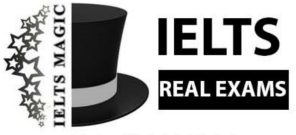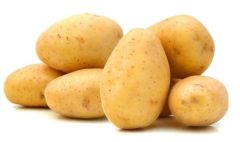PASSAGE 1 Chocolate for the masses
26 تیر 1403 1403-08-11 23:43PASSAGE 1 Chocolate for the masses
READING PASSAGE 1
You should spend about 20 minutes on Questions 1-13, which are based on Reading Passage 1.
Chocolate for the masses
For almost three thousand years, chocolate was a drink of the elite and the wealthy, originally in South America and later on in Europe. In the early 19th century, however, chocolate became far more widely available, and consumption shot up dramatically across the populations of Europe in particular.
It was 1828 that marked the beginning of the modern era in chocolate making and production. Chocolate as a drink had been known for centuries, but in 1628 a Dutch chemist named Van Houten developed a process for the manufacture of a new kind of powdered chocolate using a hydraulic press. Untreated chocolate liquor’ – the end result of grinding the cacao beans from which Chocolate is obtained – contains about 5-3 per cent cacao butter, but this machine removed nearly half of this, leaving a cake that could be pulverized into a fine powder – what is now known as ‘cocoa’.
In 1547, the British Firm Fry and Sons found a way to mix a blend of cocoa powder and sugar with melted cacao butter to produce a thin paste which could be cast into various shapes. This was the world’s first true solid chocolate. Thanks to immediate high Fernand for this product, the price of cacao butter escalated, so the new solid chocolate was only accessible for the elite. But this would eventually change, because of the introduction of cost-cutting methods and mass production.
By the latter half of the 19th century, many manufacturers had begun making their own chocolate, and using cocoa powder to hand-coat sugar confections. Cocoa powder also reached wide use in many other products, like ice creams and biscuits. Entrepreneurial families like the Frys and Cadburys in Britain had a social conscience in the midst of all this money-making, unlike many other 19th-century captains of industry. In the Birmingham suburb of Bourneville, where they had established their chocolate factor, the Cadburys created a model town with adequate housing for their workers, and even dining and reading rooms so that their employees had no need to spend anything on entertaining themselves.
However, the rising demand for chocolate also made it a target for unscrupulous producers and merchants. Sometimes the expensive cacao butter was completely extracted and replaced with olive or almond oil, or egg yolks. Alternatively, cheaper materials such as potato starch or flour were added. In 1850, a health commission was created in Britain for the analysis of foods suspicions about chocolate proved well-founded – most of the samples contained starch grains from potatoes or other plants. The investigation inspired the British Food and Drug Act of 1860 and the Adulteration of Food Act of 1872.
The invention of milk chocolate took place in Switzerland, and was a collaboration between two men. The first was Henri Nestle, a chemist who in 1867 discovered a process to make powdered milk by evaporation, when mixed with water, this could be fed to infants and small children. The second man, Daniel Peter, came up with the idea of using Nestle’s milk powder in the manufacture of a new kind of chocolate, and, in 1879, the first milk chocolate bar was produced.
Also in 1879 another Swiss, Rodolphe Lindt, invented the conche machine, which vastly improved the quality of Chocolate confectionery. Before Lindt, solid chocolate was usually coarse and gritty. Now, however, it achieved such a degree of smoothness that Lindt named it ‘fondant’, after the smooth sugar creams of that name. People on both sides of the Atlantic developed a taste for fondant chocolate, and the use of the conche machine for solid chocolate became universal in the business.
In the USA, Milton Hershey dominated the chocolate industry. In 1893, after seeing examples of the machinery used in Europe in action at an international exhibition in Chicago, he bought some and began turning out chocolate coatings for the caramels he was already producing. But after a trip to the chocolate centers of Europe, he sold his caramel business for a million dollars, bought a farm in Pennsylvania, and built a chocolate factory there.
This became the nucleus of ‘Hershey, the Chocolate Town’, which contained amongst other things Hershey’s imposing mansion, the Hershey Department Store and the Hershey Bank. ‘there was, however, no elected mayor or indeed any democratic system in place. The whole town was in essence Milton Hershey’s private kingdom, and he ran it as he wanted.
This was not the only Hershey town in existence. During a trip which he made to the island of Cuba in 1915, Hershey was inspired to build a new model town centered round a mill for grinding sugar. To transport the refined sugar so that it could be shipped by sea to his chocolate and cocoa factory, Hershey built modern electric railroads too.
To help advertise his products, Hershey employed nutritionists to proclaim their health qualities, and his chocolate bars and cocoa soon commanded the American market. Everything was mechanized – a true assembly-line operation. Hershey’s best-set King bar contained almonds imported from southern Europe dropped by machines into the waiting molds. Another popular product was ‘Hershey’s Kisses’ – bite-sized, flat-bottomed drops of chocolate, individually wrapped.
Nowadays so many tourists visit Hershey that the company no longer offers tours of its factory. Rather, visitors are whisked along on automated carts through an exhibition called ‘Chocolate World’, where they can see how their favorite products are produced.
Questions 1-6
Do the following statements agree with the information given in Reading Passage 1? In boxes 1-6 on your answer sheet, write
TRUE if the statement agrees with the information
FALSE if the statement contradicts the information
NOT GIVEN if there is no information on this
1 Chocolate was consumed by greater numbers of people in the nineteenth century than in previous times.
2 Fry’s chocolate became more affordable because of the fall in price of one ingredient.
3 Entrepreneurial British chocolate manufacturers paid their employees well.
4 Customers were made ill through the practices of unscrupulous chocolate producers.
5 Fresh milk was used in the production of milk chocolate in Switzerland.
6 Lindt’s conche machine was adopted by other manufacturers.
Questions 7 – 13
Complete the notes below.
Choose ONE WORD ONLY from the passage for each answer.
Write your answers in boxes 7-13 on your answer sheet.
Milton Hershey and the chocolate industry
• Hershey bought some 7…………………. after visiting a trade fair
• After selling his caramel business, Hershey purchased a 8………………….
• The inhabitants of Hershey could not vote for a 9………………….
• Hershey set up a new town in Cuba around a mill.
• Hershey constructed 10……………….. to transport material
• Hershey brought in 11…………………….. to improve the image of his chocolate.
• One popular chocolate product had 12…………………. added to it.
• Because of the lime demand, tourists can only visit the 13…………….. at Hershey.
1. TRUE – The passage clearly states chocolate became more widely available in the 19th century (paragraph 1).
2. FALSE – The price of cocoa butter increased after Fry’s method (paragraph 3).
3. NOT GIVEN – The passage mentions Cadbury creating a model town but doesn’t explicitly say how well they paid (paragraph 4).
4. NOT GIVEN – The passage mentions the use of substitutes in chocolate (e.g., potato starch), but it doesn’t directly say these substitutes made people sick. (paragraph 5).
5. FALSE – The passage mentions powdered milk being used in the invention of milk chocolate (paragraph 6).
6. TRUE – The passage states the conche machine became universally used (paragraph 7).
7. machinery (paragraph 8) – Hershey bought machinery after seeing it in action.
8. farm (paragraph 8) – Hershey bought a farm to build his chocolate factory.
9. mayor (paragraph 9) – The Hershey town lacked an elected mayor.
10. railroads (paragraph 10) – Hershey built railroads to transport sugar.
11. nutritionists (paragraph 11) – Hershey employed nutritionists to promote his products.
12. almonds (paragraph 11) – The King bar contained almonds.
13. exhibition (paragraph 12) – Tourists can no longer see the factory but visit an exhibition.







